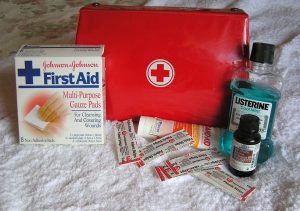- 2023 Inventory Closeout! Save On Remaining 2023 Units!
- Shop Now!

Be prepared for accidents and other problems with a roadside emergency kit. This way, if things go sideways, you can reduce the risks to you and your passengers. Below we’ll list what you need. Grab these things and stow them in your vehicle. You won’t regret the effort.
Food and Water
You may think that you’ll always be in a position to grab food and a drink even on days when a roadside emergency takes place, but this is not always the case. Make sure you have a bottle of water or a few gallon jugs just in case. You can use it to stay hydrated and fill your radiator as needed. Pack high nutrient foods as well. Granola and protein bars are ideal, as is trail mix and long-lasting canned food.
Seriously consider getting your hands on a few military ready to eat meals, commonly known as MREs, for each person in your vehicle. These tend to have very hearty food along with fire-free cooking methods, and they have a considerable shelf life.
Methods for Heating and Cooling
Pack chemical packs that heat or cool through chemical reactions along with blankets, ponchos, and other weather gear in your emergency kit. You shouldn’t rely on your heating and air system during an emergency. There may be no way to tell if or when help will arrive, depending on the circumstances. If you are in a cold area, consider including heavy clothing for those who regularly ride with you. Extra layers could save lives in extreme cold. If the area you frequent is very hot, pack reflective windshield and window covers to prevent the interior of your vehicle from overheating.
First Aid and Basic Tools
Make sure that you have the proper supplies for tire replacement and battery jumping, including a battery recharge pack, a lug wrench, a jack, a portable air compressor, and a temporary tire sealant. If you can repair enough damage, you may be able to make it to safety with a damaged vehicle, but if you decide to move in that direction, do so very carefully and stick to the slow lane so that you can pull off of the road at need.
Make sure you have a method, or more than one if possible, to call for help. These methods include cell phones, build-in emergency communication devices, and flares.
The inclusion of a first aid kit is vital to creating a proper roadside emergency kit. You may be tempted to go with a cheap version. Avoid that impulse. Purchase a complete first aid kit. Make sure it includes scissors, disinfectant/antibacterial ointment, an assortment of various bandages and gauze rolls and patches, medical tape, sterile gloves, hydrogen peroxide, epi-pens to combat allergic reactions, fine-point tweezers, pain relief meds, antiseptic wipes, a suture kit, and a first aid handbook.
Many kits do not include a suture kit. Make sure the one you choose does, as the sort of wounds they treat are common during roadside emergencies, and using one properly could save someone’s life as you wait for emergency aid.
Set your mind at ease through the creation of a roadside emergency kit. Properly assembled, these kits can be the difference between disaster and salvation.
Image via Pixabay.com








